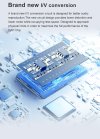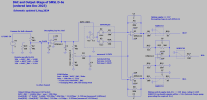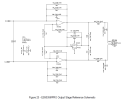There are a couple of approaches you might take to resolve your concerns. When I am considering a major purchase and have lingering questions about some aspects of the product's performance, I will usually scour the Internet for reviews and forum discussions to see if the issues I'm wondering about are being encountered by others. If you find little to no complaints about signal degradation from the miniDSP Flex Digital, you may be able to buy with more confidence. Another option would be to purchase from a seller like
Deer Creek Audio, offering a
30-day return window. Unfortunately, that benefit will cost you extra. Their price is $54 higher ($549) and if you decide to return the Flex you'll need to pay for shipping, plus a 15% restocking fee.
Like you, I am often mystified by the charts and graphs that are produced - as
Sokel admits - by those who are obsessed with measurements. But after their tests are complete and they tell me that the device contributes no audible noise or distortion, I tend to have faith in their conclusions.
[Since the subject of this thread is the Topping D50 III we're going a bit off-topic with the miniDSP Flex. It's probably better to address questions about the Flex on this thread:
Minidsp Flex Review (Audio DSP)]



